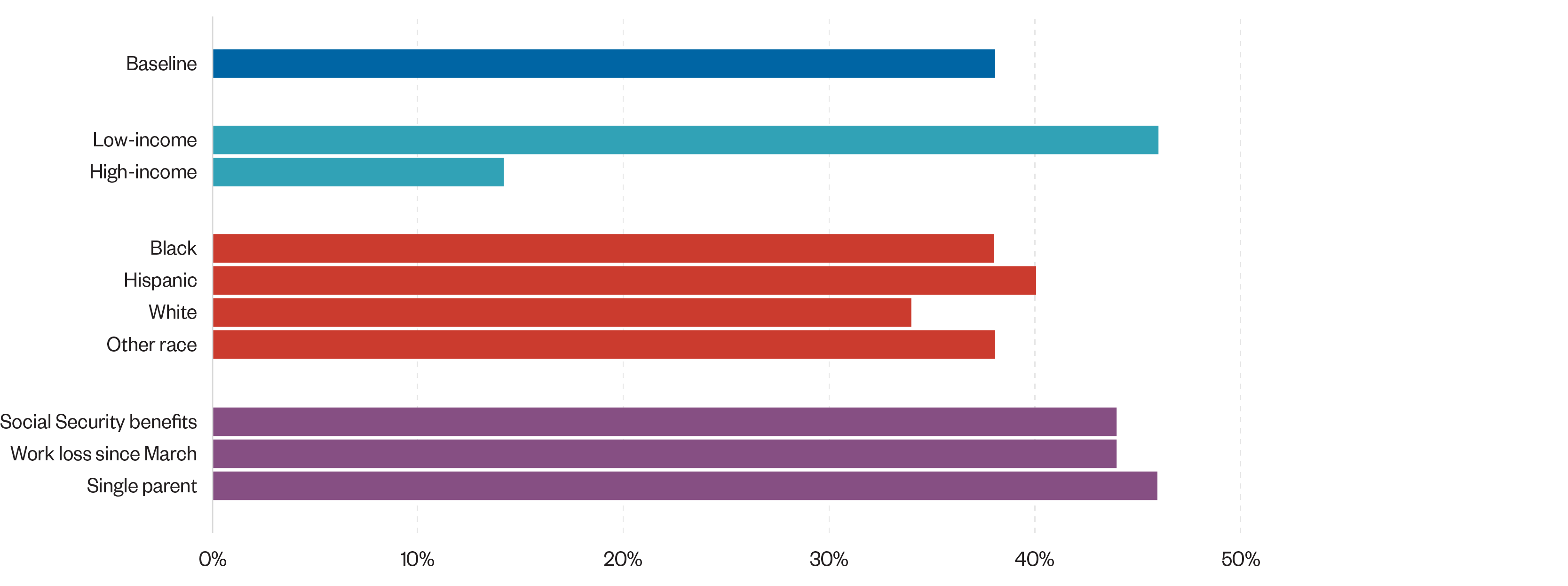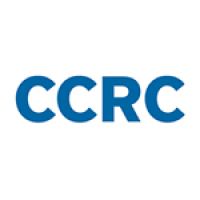By Clive Belfield and Thomas Brock
Every two weeks since mid-summer, the U.S. Census Bureau has surveyed households on their postsecondary decisions in the time of COVID-19. The survey provides near real-time snapshots of how the pandemic has shaped college opportunities and choices, including decisions by families with current or prospective community college students.
Each round of the survey involves a random selection of 100,000 addresses from across the country that represent the entire population. We analyzed data from approximately 25,000 respondents who reported “plans for community college” for at least one member of their household from August to mid-October 2020, a time we refer to as “mid-pandemic.” As the pandemic develops and students make decisions about the spring 2021 semester, we will learn more about whether their responses reflect temporary changes or longer-term trends.
Abandoning Community College Plans
The survey reveals that the pandemic has had a strong negative influence on community college enrollment. As of October 2020, more than 40% of households report that a prospective student is canceling all plans for community college; another 15% are either taking fewer classes or switching programs. Community college students are canceling their plans at more than twice the rate of four-year college students.
Postsecondary Responses to Pandemic

These cancellations will result in a large deficit in postsecondary skills over the next few years. We do not yet know how students will respond once the pandemic is brought under control. A hopeful scenario is that students will return to community college in large numbers and enroll in more courses to make up for lost time. A more worrisome possibility is that many of these students may be lost permanently to higher education, with long-term economic consequences for them and the nation at large.
Adjusting to New Conditions at College
Many factors can cause students to exit higher education or change their plans. Mid-pandemic, changes within the community college sector look very different from those in the four-year sector.
First, over one third of households with current or prospective community college students cite the virus—either contracting it, being concerned about contracting it, or caring for someone who has it—as a significant factor affecting postsecondary plans. This compares to 23% of households with a four-year college student. The difference likely reflects the fact that community colleges disproportionately serve demographic groups that have been hardest hit by the pandemic, including Black and Latinx students and low-income households.
Second, the survey reveals that affordability and financial aid problems are almost twice as large for households with community college students as for households with four-year college students. This, too, likely reflects the fact the community colleges tend to serve a population that is lower-income and that has been more vulnerable to job losses during the pandemic.
Why Did Postsecondary Plans Change?

Third, the survey shows that changes to the format and content of college classes—including the shift to online education—play a very big role in postsecondary plans. A little more than one third of community college students consider this important to their plans. Examining individual households within the dataset, we found this factor had mixed effects: For some students, the change in format dissuaded them from enrollment; for others, it persuaded them that college was COVID-safe. Critically, the persuasion effect appears much bigger—changing the format of college has helped students stay engaged despite the virus. This suggests that community colleges may be able to increase enrollments by taking additional actions to assure students that campus and classroom conditions are safe, or that online options are both available and worthwhile.
An even greater percentage of households with four-year college students report that changes in class format and content affected their plans, again in net positive ways. With this switch, at least some of the decisions to cancel plans—perhaps one quarter—have been averted within the four-year sector.
How the Pandemic Is Worsening Equity Gaps
Within the community college sector, not all students changed their plans in the same way or faced the same pressures on their college choices.
The figure below shows the characteristics of students who canceled all plans for community college. The bar labeled “baseline” represents the average for all households with a current or prospective community college student.
Canceling All Community College Plans

Clearly, income and economic security play a big role in who cancels their community college plans. For low-income households, exits are much higher: Almost half have canceled their plans. Economic insecurity—relying on social security benefits, losing a job during the pandemic, or being a single parent—matters too. The pandemic is pushing these types of students out of community college.
The figure below shows the direct effect of financial pressures on paying for college (either in terms of concerns about affordability or changes in financial aid eligibility). But there are differences across racial/ethnic groups, with minority households much more likely to experience these financial pressures.
Evidence on the impact of work loss on community college plans is particularly striking. Many students work while they attend school. Typically, work and college are mutually reinforcing joint decisions. Losing a job may make college unaffordable. We see this happening with the pandemic. Almost 40% of community college students cite job loss since March 2020 as a reason they are changing their educational plans.
Financial Pressures Affecting Community College Plans

The Value of College Skills
Given the economic disruption caused by the pandemic, students might ask: What is so desirable about community college now, anyway? If there are fewer, less well-paying jobs post-pandemic, then presumably there is less incentive to accumulate new skills. Students—particularly those on the edge of deciding whether to attend—might see abandoning college as a financially rational response to the pandemic.
This is not the right conclusion to draw if we look at recent economic trends. The economy has been hit hard by the pandemic, but to date, the labor market effect is stark in one dimension: job loss, with approximately one in 20 workers newly unemployed since the start of the pandemic. For workers who have jobs, wages and hours of work have held up surprisingly well. Productivity losses (which would reduce earnings) have been partially mitigated because over one third of the workforce has switched to working remotely. As with the Great Recession of 2008, the big risk of the pandemic of 2020 is losing one’s job and not being able to get a new one, and that risk is much lower for skilled workers.
Projecting what will happen is difficult, especially in the face of such uncertainty. But historically, people who earn a community college degree get a substantial boost in earnings compared to individuals who leave community college before completion. The economic rewards are even greater for those who go on to earn a bachelor’s degree. As the nation grapples with the many challenges related to the pandemic, colleges need to re-engage students who stayed away due to COVID. This may involve a combination of targeted outreach to populations most affected by COVID, more attention to creating COVID-safe environments on campus and viable online options, and increased financial assistance for students from low-income households to afford college.
Clive Belfield is a professor of economics at Queens College, CUNY, and a CCRC research fellow. Thomas Brock is the director of CCRC.





